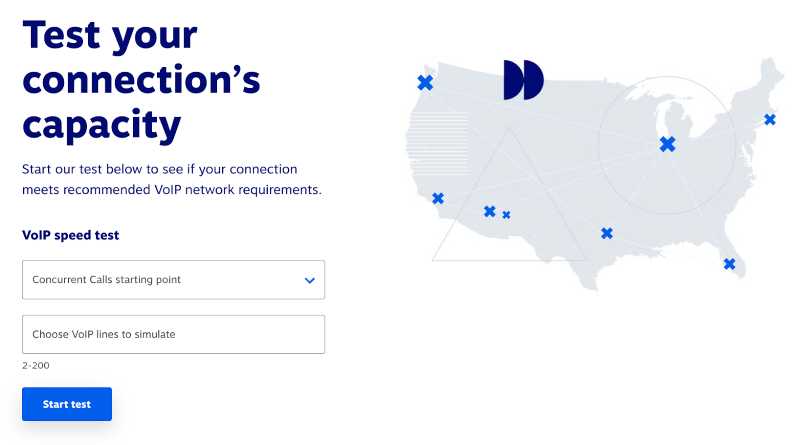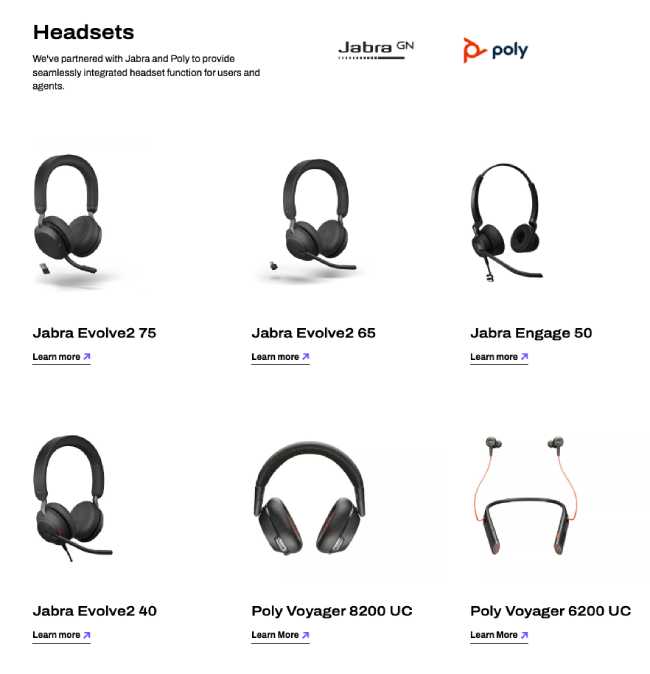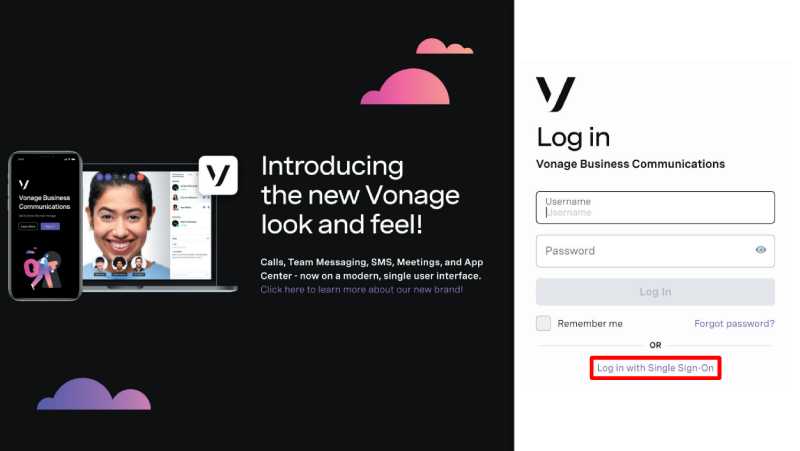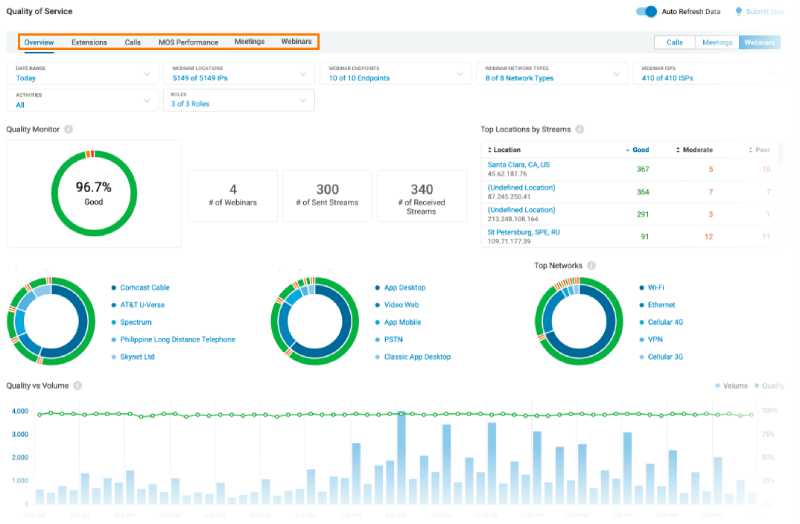Various factors influence the quality of voice-over-internet-protocol (VoIP) calls, including latency, packet loss, and available bandwidth. Poor call quality increases average handling time and call abandonment rates, ultimately leading to frustrated clients. To deliver excellent customer service, businesses must know how to improve VoIP call quality—adopting strategies like upgrading the internet plan, setting up a virtual local network, and securing the VoIP system.
Follow these steps to enhance the quality of phone conversations in your call center:
Step 1: Secure Enough Internet Bandwidth
The lack of internet bandwidth is typically the cause of garbled sounds and dropped calls. The minimum internet speed for voice calls is between 90 kilobits per second (Kbps) and 156Kbps. Meanwhile, you need a minimum of 1 megabit per second (Mbps) to support high-quality video meetings.
Thus, part of the strategies on how to improve VoIP call quality is upgrading your plan with your internet service provider to secure sufficient bandwidth for VoIP. From there, run a VoIP speed test to learn if your internet connection can accommodate VoIP calls.

Nextiva lets users run a VoIP speed test on its website. (Source: Nextiva)
Business phone provider Nextiva features a free VoIP speed test tool on its website. Input the starting point location of concurrent calls and the number of VoIP lines to simulate, and Nextiva will examine metrics such as latency, upload and download speeds, packet loss, and jitter. The test determines if your infrastructure can deliver excellent VoIP call quality. As noted in our Nextiva review, the provider offers its base-level subscription plan for only $30.95 per user.
Step 2: Use VoIP-optimized Routers
Most small businesses use one router for all internet-based applications. This shouldn’t be a problem if you’re not heavy on web browsing, media streaming, or file downloads. But if your team requires these internet activities for work, expect network congestion that will cause audio issues in your phone conversations.
To deliver the best VoIP call quality, use VoIP-optimized routers, which are specialized routers prioritizing VoIP traffic over data communications. Linksys EA8300 Max-Stream is our top-recommended router, as it offers excellent customizability, providing various options for prioritizing data allotment between devices and applications. To know more about the best devices in the market, check our comprehensive list of the top VoIP routers.
Step 3: Set Up a Virtual Local Network (VLAN)
Another strategy for implementing traffic prioritization is using a VLAN, a subset of an existing network that groups specific devices sharing a physical LAN. This means you’ll be able to segregate VoIP devices from those using other types of data.
The best part about VLAN is the enhanced security. Users and devices handling sensitive data, such as clients’ financial information, may be segmented in the same VLAN. With this, other devices won’t have access to traffic within that group, improving data security.
Step 4: Purchase New Headsets
A headset is the primary instrument that delivers sounds to the agent’s ear. Low-quality equipment may cause echoing and unnecessary noises in phone conversations. Investing in high-quality headsets delivers high-definition audio to improve overall VoIP call quality.
Choose headsets with noise-canceling capabilities to capture voice clearer and filter out noises in the background. For your agents’ convenience, go for headsets with Bluetooth features. Users won’t have to be tied to their desks when answering calls, and their workstations will be clutter-free without wires.

Dialpad offers a range of VoIP headsets. (Source: Dialpad)
Dialpad is one of the VoIP providers offering high-quality headsets, carrying the popular brands Jabra and Poly. Some headsets come with a maximum of 18 hours of battery life and enable connecting two Bluetooth-enabled devices, such as a smartphone and a computer. Others have built-in call controls, which allow service representatives to answer and disconnect calls, control audio, and speed dial contacts.
In our Dialpad review, we recommend the VoIP system to companies wanting to streamline calls using artificial intelligence. Subscribe to the provider for only $23 per user, monthly.
Step 5: Switch to Wired Connections
Wi-Fi is more convenient than Ethernet since the former doesn’t require connecting cables from the router to every VoIP device. However, Wi-Fi sometimes provides an unstable connection because it’s subject to interference. Some objects blocking the signal and electronic devices may cause higher latency, compromising VoIP call quality. If you experience phone echoing during conversations, that may be due to interference.
For this reason, one of the best tips on how to improve VoIP call quality is to switch from Wi-Fi to wired connections. With the Ethernet cable plugged into your devices, you’re able to reach the maximum speed your internet service provider offers. Since wired connections have less latency, the data moves more quickly, resulting in fewer lags in phone calls.
Step 6: Secure Your VoIP System
Some businesses troubleshooting VoIP call quality issues learn that the reason behind the poor audio and dropped calls is call tampering. This is one of those VoIP security threats wherein bad actors inject noise packets into the communication stream, keeping participants from hearing each other clearly. Similarly, hackers may delay data transmission, which leads to choppy audio and long periods of silence during the call.
Check if your VoIP system has various layers of protection from unauthorized access. This is critical not only in reducing the likelihood of poor-quality VoIP calls, but also in preventing data breaches that could damage your company’s reputation, financial stability, and customer loyalty. Strong passwords and encryption are the best defenses against call tampering.

Vonage enables users to log in with single sign-on. (Source: Vonage)
Reliable business phone provider Vonage makes password management easier for businesses, given its single sign-on. By allowing the use of existing company credentials to log in, the provider prevents password theft, as users won’t have to manage too many accounts and write passwords down. To learn more about its security features, check out our comprehensive Vonage review.
Vonage complies with various security standards, such as the Health Insurance Portability and Accountability Act (HIPAA) and Payment Card Industry Data Security Standard (PCI-DSS), which enforces data encryption. The provider’s entry-level plan costs $19.99 per user, per month.
Step 7: Partner With a Reliable VoIP Provider
A good business phone system vendor has multiple data centers across the globe, providing reliable VoIP services that deliver crystal-clear sound quality and reduce interruptions during conversations. Since these data centers are spread across the globe, you can count on a backup system that will support your communications in case the primary site fails in the event of a disaster.
Your business won’t suffer network outages, dropped calls, or other call quality issues when a region is affected. Thus, it’s important to choose your VoIP provider wisely.

RingCentral shows real-time information on the phone system’s quality of service. (Source: RingCentral)
RingCentral, a top VoIP phone system, is an excellent choice for a reliable business phone solutions vendor. It has a global network of multiple data centers located close to internet exchange points and major telecommunication carriers, offering fast response times and interconnect services. Moreover, it features a Quality of Service report, which lets users monitor the health of the company’s VoIP system.
The dashboard shows patterns of degradation in call quality, helping you make corrective actions before the problems disrupt call center operations. Our RingCentral review offers a quick overview of other notable capabilities. If you’re interested in subscribing to the platform, its entry-level plan only costs $30 per user, monthly.
Frequently Asked Questions (FAQs)
VoIP phone systems convert voice signals into digital packets transmitted via the internet. Different kinds of devices make VoIP calls, including a computer, a smartphone, a VoIP phone, and an analog phone connected to an analog telephone adapter (ATA). To know more about how VoIP works, read our simple guide on What Is VoIP?
How to test VoIP call quality involves looking at the following factors:
- Upload speed: The higher the upload speed is, the clearer the audio will be for the person on the other end of the line. You must have at least 100Kbps per phone line.
- Download speed: Aside from affecting your ability to hear the individual on the other end of the line, this determines if your system can handle multiple concurrent calls. The ideal download speed is 100Kbps per line.
- Latency: This refers to the duration it takes for one data packet to travel from your device to a destination and back. A latency of 20 milliseconds (ms) is normal. 150ms is not too noticeable, but a figure higher than that compromises call quality.
- Jitter: This refers to the variation in latency caused by congestion. The ideal jitter is 15 to 20ms. Any figure above this range means you need more internet bandwidth.
When investigating the reason behind VoIP call quality issues, consider these factors below:
- Internet bandwidth: Note that the protocols used for the transmission of voice packets are different for data packets. See if your bandwidth is enough to accommodate various online activities.
- Network configuration: Related to the point mentioned above, your VoIP calls may be competing for bandwidth with other internet-related tasks, such as streaming videos and downloading files. Check your network configuration and prioritize VoIP traffic.
- Equipment: Poor quality or damaged headsets cause audio problems in VoIP calls. Inspect equipment every now and then and ensure the cables aren’t frayed or torn. Replace them if necessary.
- Security: Bad actors gaining unauthorized access to your network or accounts compromise call quality. If the choppy audio and dropped calls happen along with unusually large volumes of calls, especially international calls and logins from other unrecognized devices, your VoIP system may have been hacked.
Bottom Line
Excellent call quality is crucial in providing a seamless, convenient customer experience. It makes information, instructions, and agreements clearer, removing confusion that could be a source of disputes later. On the agent’s end, phone conversations void of unnecessary, distorted sounds lead to greater efficiency in accommodating customer concerns and requests. This improves average handling time, thus allowing agents to take on more clients’ inquiries.
Follow the strategies for enhancing audio clarity and eliminating disruptions in conversations. Learn more about solutions for phone call issues in our simple guide on common VoIP problems and fixes.